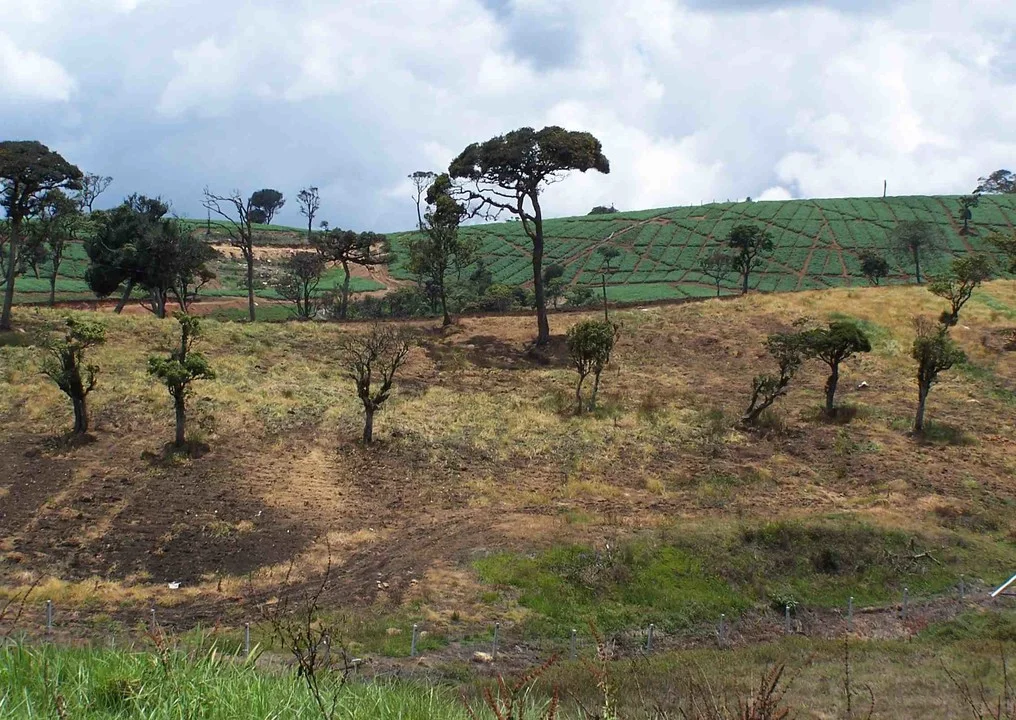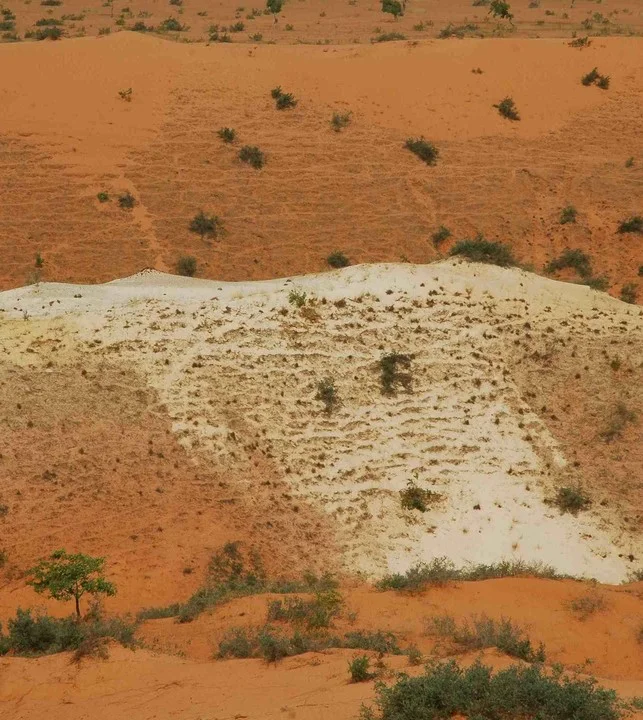Carbon (C), the fourth most abundant element in the Universe, after hydrogen (H), helium (He), and oxygen (O), is the building block of life. It’s the basic element that anchors all organic substances, from fossil fuels to DNA. On Earth, carbon cycles through the land, ocean, atmosphere, and the Earth’s interior in a major biogeochemical cycle (the circulation of chemical components through the biosphere from or to the lithosphere, atmosphere, and hydrosphere). The global carbon cycle can be divided into two categories: the geological/ancient, which operates over large time scales (millions of years), and the biological/modern, which operates at shorter time scales (days to thousands of years).
The Global Carbon Stock :
The Global Carbon Stock began Billions of years ago, as planetesimals (small bodies that formed from the solar nebula) and carbon-containing meteorites bombarded our planet’s surface, steadily increasing the planets Carbon content. Today such increments to the planet’s Carbon stock have ceased, but the stock has become more compartmentalized.
Since those times, carbonic acid (a weak acid derived from the reaction between atmospheric carbon dioxide [CO2] and water) has slowly but continuously combined with calcium and magnesium in the Earth’s crust to form insoluble carbonates (carbon-containing chemical compounds) through a process called weathering. Then, through the process of erosion, the carbonates are washed into the ocean and eventually settle to the bottom. The cycle continues as these materials are drawn into Earth’s mantle by subduction (a process in which one lithospheric plate descends beneath another, often as a result of folding or faulting of the mantle) at the edges of continental plates. The carbon is then returned to the atmosphere as carbon dioxide during volcanic eruptions.
The balance between weathering, subduction, and volcanism controls atmospheric carbon dioxide concentrations over time periods of hundreds of millions of years. The oldest geologic sediments suggest that, before life evolved, the concentration of atmospheric carbon dioxide may have been one-hundred times that of the present, providing a very different atmosphere and substantial greenhouse effect.
Fossil Carbon
The operation of life has been clearly demonstrated to change the chemistry of that atmosphere to what it is today. One of the most active agents of this change were/are the oceanic plankton, photosynthetic microscopic phytoplankton that produce prodigious quantities of oxygen and biomass over time. Oxygen is released to the atmosphere and the biomass is consumed by respiring zooplankton (microscopic marine animals) within a matter of days or weeks. Only small amounts of residual carbon from these plankton settle out to the ocean bottom at any given time, but over long periods of time this process represents a significant removal of carbon from the atmosphere. This slow removal of Carbon from the primary atmosphere into the fossil reservoir, while at the same time creating an atmospheric reservoir of oxygen, had a major effect on the maintenance of biotic homeostatis.
A similar process was repeated on the land especially at Devonian times with the huge vegetation mass that covered the earth absorbing Carbon Dioxide and them being mineralized in the lithosphere into coal, effectively removing that volume of carbon from earths atmosphere. The Oxygen released by these early prodigious forests contributed greatly to the chemistry of the current atmosphere.
Life on Earth learnt how to maintain gas and material flows, optimum for the evolution of biodiversity. Carbon Dioxide, although essential to the process of life, was being introduced into the atmosphere by volcanic processes at disruptive levels, throughout geologic history. But the gas has not concentrated in the atmosphere, because it was sequestered by living things and put away out of circulation from the biosphere of living carbon. This store of carbon was fossilized and has been slowly accumulating over the last few hundred million years.
Through these processes, which are still active today, Carbon that enters the Lithosphere is removed completely from the biological cycle and becomes mineralized into pools with ages of 100’s of millions of years.
The modern carbon cycle
On land, the major exchange of carbon with the atmosphere results from photosynthesis and respiration. During the daytime in the growing season, leaves absorb sunlight and take up carbon dioxide from the atmosphere. In the oceans the planktonic cycle operate a similar photosynthetic cycle. Both create biomass. In parallel, plants, animals and substrate microbes consume this carbon as organic matter, transform it in the process of respiration and finally return it as carbon dioxide to the atmosphere. When conditions are too cold or too dry, photosynthesis and respiration cease along with the movement of carbon between the atmosphere and the land surface. The amounts of carbon that move from the atmosphere through photosynthesis, respiration, and back to the atmosphere are large and produce oscillations in atmospheric pressure, water vapour and carbon dioxide concentrations. The global impact of active photosynthetic biomass can be illustrated by the volume of water released into the atmosphere as water vapour. At a water release rate of 100:1, where over 100 molecules of water are released for each molecule of carbon dioxide absorbed by the leaf (Jones 1976). The quantity of water released annually into the atmosphere by vegetation is between 5640 – 6280 billion tons.
In the course of an year, these biological fluxes of carbon cycle over ten times the amount of carbon that is introduced to the atmosphere by fossil fuel burning. But this carbon belongs in the atmosphere. it has a very significant chemical signature in the ratio of its 13C to 12C as well as quantity of the rare unstable isotope 14C. All carbon that lacks 14C or has a lower 13C/12C ratio does not belong in the modern or biotic cycle. This fluxing movement of biotic carbon happens in cycles of a few days to thousands of years, but always maintain the same isotope ratio.
Table 1 : Distribution of Global Carbon Stocks in Gigatons (Gt)
Biotic Carbon:
Atmosphere 750
Warm Ocean Surface 620
Cold Ocean Surface 350
Warm Marine Biota 2
Cold marine biota 1
Land Biota 610
Soil 1580
Total 3913
Fossil Carbon :
Deep Ocean 38,000
Sedimentary Rock 1,000,000
Total 1,380,000
Time as a value variable in sequestered Carbon :
Sequestered or solid biotic carbon consists roughly of about two-thirds of the modern global carbon pool. It is this pool that possesses the capacity to sustain both the Carbon sequestering processes and the Oxygen generation processes. The effect of human ‘development’ activity has been to reduce the volume of this biologically productive carbon pool. The removal of forests and the destruction of wetlands are significant examples.
Using the definition of FAO (2005). Carbon stock refers to the amount of carbon stored in the world’s forest ecosystems, mainly in living biomass (44%) and soil (46%), to a lesser extent also in dead wood (6%) and litter (4%). The amount of carbon stored in a hectare of forest and the relative contribution of the different parts of the ecosystem to the total carbon stock vary from region to region (Figure 1.) Overall, the world’s forest ecosystems are estimated to store a total weight of about 638 Gt (638 billion tonnes) of carbon (FAO 2005). However, more recent estimates put the total amount of Carbon sequestered in forest at a lower figure of approximately 359 billion tons, (Plantinga et al 2008). These initial estimates vary because of the differences in the definition of a forest and due to large data gaps for soil carbon in major ecosystems such boreal peat bogs and forests, tundra etc.
When considering Total Carbon Stock, sequestered carbon in the form of woody biomass was the first sink considered as a potential tool in locking up atmospheric carbon. But all wood is considered uniformly as biomass. However, a very important aspect of wood, familiar to all carpenters is missed, its durability. The value ascribed to a unit of woody biomass has to be measured in terms of sequestered time. While all plants sequester carbon, trees and woody plants are most efficient as they produce resistant compounds such as lignin. Consider the fate of two photosynthetically derived objects of similar biomass – a large pile of seaweed and a log lying on a beach. Both are plant products, but one (the tree) is strengthened with lignin. The same biological, chemical and physical forces will impact both. The seaweed will have disappeared within a few weeks the log may remain more or less the same for years.
Thus the pile of seaweed on a beach will have a far lower carbon sequestering value than the log beside it. Its photosynthetic biomass value might be greater, but this subject will be dealt with in another paper.
Today, sequestration seems to have taken the meaning of the ‘act of sequestration’ more than the ‘product of sequestration’. Most models on carbon sequestration examine growing plantations as opposed to maintaining established forest stocks. The value setting in sequestered carbon, a potential multi billion-dollar industry must be by placing value on the existing stock. To have no or low value will mean the easy liquidation of existing stock, which will add to atmospheric carbon dioxide concentration. The equation is simple and straightforward; the carbon that is tied up in the biological cycles of the planet has value as sequestered carbon. The time horizon that the carbon can be sequestered for, contributes to the value of this stock. So that while the carbon fixed by a Wheatfield has a value because it sequesters carbon, this value is low because it can only sequester it for time horizon under one year. By contrast a forest or peat bog represents a carbon stock that has time horizons of hundreds or thousands of years and has much higher sequestering values.
The logic in accepting time as a value variable in payments for sequestered carbon is clearly illustrated when the qualities of wood are considered. An important attribute of wood in terms of its sequestering value is its durability. Natural durability is a reflection of the wood’s ability to withstand the attacks of decay organisms. Archaeological finds often demonstrate wooden construction items dating back about 1000 years. In America a durability standard has been devised by using White Oak as the standard. In this method of evaluation White Oak is given a rating of 100. Wood with higher scores such as Red Cedar (150-200) or Black Locust (150-250) is more durable. Woods with a lower score such as Hemlock (35-55) or Birch (35-50) are less durable
In addition to producing the photosynthetic products listed above a growing tree also contributes to the creation of soil organic matter. As a forest product, soil also has great value as a carbon sink, the process of biochemical distillation of photosynthetic products can keep atmospheric carbon dioxide tied to or sequestered by the biological system for periods exceeding 4000 years. While about 16 percent of the long-lived fraction identified as ‘old carbon’ can have lifetimes from 5700 – 15,000 years. The role of soil in sequestering, or tying up, atmospheric carbon dioxide needs to be better recognized. An evaluation of the sequestering potential of various forest ecosystems suggests that forest soils contain a large proportion of the carbon pool. These long-lived compounds are a product of the bio-chemical distillation of photosynthetic products and tie up about 20-30% of the organic matter reaching the soil from the above ground environment. This long-lived matter (LSc) component can be represented as a ratio of plant production.
A land use design that incorporates carbon sequestering as a goal will tend towards long rotation tree crops. The other ecosystems providing long term sequestration are anoxic areas such as peat bogs and ecosystems that experience a long freezing period such as the tundra. Trees play a smaller role in these ecosystem, which are composed largely of mosses, lichens, and other non lignaceous plants. The carbon in these systems are mostly non-living and represents the accumulation of carbon in soil and bog. In fig 1 this trend is clearly seen in terms of the carbon in soil relative to carbon in biomass. The evaluation of these ecosystems in respect of the sequestering time of carbon remains an area to be addressed in terms of Sequestered Time Credit (STC).
The Fossil subsidy :
It is now clear that fossil Carbon and biotic Carbon have extremely different sinks and need to be valued differentially when considering the impact on the global biosphere. While the carbon balance of the planet has been initially modified by colonial human activity, with the massive loss of the forests of the world, creating the ‘trigger’ for global warming trends; it is the post industrial burning of fossil carbon that introduces an increasing increment of ‘new’ carbon into the atmosphere. The losses due to the effects of ‘Climate Change’ must be seen as the opportunity cost of the use of fossil fuels at very least. A resolution on this ‘Fossil Subsidy’ and the setting of a price differential that recognizes the difference in value between fossil and biotic carbon needs to be addressed at fora such as the IPCC of the CCC.
However, the reticence of some Governments to face up to their global obligations, underscores the great danger of accepting the consumption on fossil fuels as a tool for ‘development’. Once a nation or economy has become ‘fossil addicted’, they are willing to sacrifice their own wellbeing and the well being of others to feed their addiction.
A clear distinction between fossil and biotic energy and a placing of differential values on the two sources, will go a long way to expose these addicted economies and assist ‘developing nations ‘ to avoid the pitfalls. The ‘fossil subsidy’ including the fossil cost of cement production and use, required for the creation and operation of future ‘development’ projects should become cost criteria for acceptance or rejection of future ‘development’ projects.
Bio Fuels :
The first source of energy that was harnessed by humanity was fire. The first material that supported it was wood. Biofuel has been with humanity for a very long time. Biofuels now range from the wood to ethanol to fixed oils in Diesel Engines and offer substitutes for fossil derived materials. Given our current levels of consumption of energy it will account for a significant percentage of transport energy.
Therefore, the biofuel industry can develop pricing norms and standards that allow it to develop as a strong component of the sustainable energy sector.
Biofuel is attractive as a resolution to the crisis in climate change in so far as it does not use fossil fuel in its production and delivery. The quantum of fossil fuel required to produce and deliver biofuel must be seen as a cost and must be subtracted from the energy yield expected from the use of biofuel. This is a primary concern and a base cost. In addition to this cost, the real costs listed below must also be computed when assessing the value of a unit of biofuel.
In developing the cost of biofuels at least four considerations have to be addressed. The fossil energy ratio, the opportunity cost in Carbon sequestration. The opportunity cost in biodiversity maintenance and the opportunity cost in water quality. Opportunity cost being the value of the options lost by choosing a certain course of action.
The fossil energy ratio :
The energy gained from growing biofuels as well as the energy required to grow and supply humanity with its food and feedstocks, need to be computed as a ratio of the quantum of fossil energy in the form of motive power, fertilizer, chemicals etc that is used to produce a quantum of biofuel and food.
The amount of energy that is used to produce food has now reached the state when it takes more fossil energy to produce a unit of food than the energy gained by consuming it !
In terms of food security this process moves the food production system of the planet to a situation where the price of food will be linked directly to the price of fossil fuel. Given the increasing demand for fossil fuel and the finite nature of the resource, food security will be compromised and food production dependent on fossil fuel availability.
The opportunity cost in biodiversity maintenance:
The goals of the Convention on Biological Diversity (CBD) are: the conservation of biological diversity, the sustainable use of its components and the fair and equitable sharing of the benefits. All areas of the planet have their own distinct ecosystems. The proportion of natural to anthropogenic ecosystems, vary with the intensity of impact wrought by the management approach. The impact of any proposed biofuel production unit on the biodiversity of the land impacted must be evaluated and computed in the cost. The history of the massive loss invaluable and irreplaceable ecosystems throughout the planet, to vast monocultures of crop or biomass production is reason enough to address this cost.
The opportunity cost in water quality:
A forest and water have a special relationship. As a forest matures within a catchment so does the quality of its water. Logging or disturbance produces a marked decrease in the quality of water. In experiments with logging and fire in Victoria, Australia, it has been clearly demonstrated that disturbance can have a negative effect on water quality.
Forests conserved for perpetuity conserves biodiversity and generates high quality water, while plantations grown for a few years yield much lower water quality. With the awareness that water will be the most important natural resource in the current century, the maintenance or improvement of water quality must become a determinant of land use in the production of biofuels.
Biomass Plantations :
Biomass is very similar to bio fuel. Biofuel being a special class of biomass. Biomass plantations are established for the production of wood and fiber not destined for energy production. In many cases these plantations are established for the production of wood, fibre or pulp. Their value in terms of Carbon sequestering is small as much of the biomass produced has a very short sequestered life. The four considerations presented for biofuel (above) must also be applied when assessing the value of such plantations in creating pools of sequestered Carbon.
Response systems:
The Convention on Climate Change has to deal with the Chemical as well as the physical state of the atmosphere. Both of which are ‘unowned’or represent the ‘commons’. The hypothesis that ‘what is unowned is unmarketed, what is unmarketed is under priced, what is under priced is mismanaged, overused and wasted’, has provided the underpinning of the idea of the sovereignty of the market economy. All possible entities are perceived as ‘goods’ or ‘resources’. Given present Geopolitics, it is highly unlikely that any nation will surrender a perceived opportunity to exercise ‘ownership’ – Especially if it was a resource that can be seen to emanate from within a given geopolitical boundary. This concept can also be brought to bear on the Cycling Atmospheric Gasses (CAGs). These gasses Oxygen, Carbon Dioxide, Nitrogen, and the minor gasses are all in a uniform mix in the atmosphere over all nations. However, there is no equity in the recognition and evaluation of national production. To set price, there will have to be recognition of the Standing Global Stock (SGS) of the CAG’s. All Countries have a great amount to gain in the recognition of an international Ownership of the SGS.
The global stock of CAGs has been created through the advent of physical and biological processes before the evolution of geopolitical boundaries. The situation today is that countries have well defined boundaries within which such geological and biological processes operate. Current production within any such boundary can be evaluated relatively easily, on a daily basis if need be, using the modern sensing technologies. An example of this can be drawn from two gasses, Oxygen and Carbon Dioxide.
Oxygen or Carbon Dioxide has been produced over ages by all the countries of the world and by seas and continents of the past. The production homogenized by the global cycles into the global pool. The global stock of gasses today is what has to be fixed as the level of the global stock and can form the capital to construct a real development bank. The function of this bank will be to buy from producers and bill consumers to maintain some agreed levels of atmospheric gas concentrations. Nations with forests or with low levels of fossil emissions can be recognized for their contributions and seek paths of development not designed to make them fossil fuel addicted. The laundering of fossil carbon can be addressed as it will discount the value of the bank. It could assist nations to become responsible global citizens and not become destructive global parasites!
The atmosphere oscillates in respect of its gasses but is kept in a balance by life’s processes. The first human driven change that affected the local and regional climates was the massive loss of the global standing forest stock with the advent of colonization. This loss represents a debt to the nation that lost its forests as well as a debt to planetary atmospheric equilibrium. This debt can be settled by re-establishing the sequestered stocks that were lost.
But once this debt is settled there will be no more room on this planet to plant more trees to sequester the fossil carbon. However we examine it, it is the biomass carbon that operate the current biosphere. It is this living biomass that has to sequester the lost biotic carbon. Much of this biomass is in degraded ecosystems around the planet, but what these degraded ecosystems do have, is great growth potential. If the restoration of these degraded ecosystems to achieve optimal biomass becomes a global goal, the amazing magic of photosynthesis could indeed help change our current dire course and create a new paradigm on growth.








